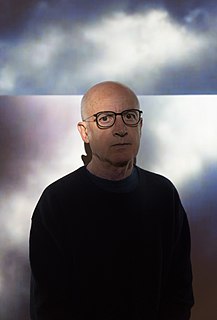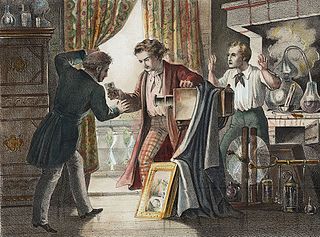Related Research Articles

Joseph Nicéphore Niépce, commonly known or referred to simply as Nicéphore Niépce, was a French inventor, usually credited as the inventor of photography and a pioneer in that field. Niépce developed heliography, a technique he used to create the world's oldest surviving product of a photographic process: a print made from a photoengraved printing plate in 1825. In 1826 or 1827, he used a primitive camera to produce the oldest surviving photograph of a real-world scene. Among Niépce's other inventions was the Pyréolophore, one of the world's first internal combustion engines, which he conceived, created, and developed with his older brother Claude Niépce.

Chalon-sur-Saône is a city in the Saône-et-Loire department in the region of Bourgogne-Franche-Comté in eastern France.

Heliography from helios, meaning "sun", and graphein (γράφειν), "writing") is the photographic process invented, and named thus, by Joseph Nicéphore Niépce around 1822, which he used to make the earliest known surviving photograph from nature, View from the Window at Le Gras, and the first realisation of photoresist as means to reproduce artworks through inventions of photolithography and photogravure.
Anna Fox is a British documentary photographer, known for a "combative, highly charged use of flash and colour". In 2019 she was awarded an Honorary Fellowship of the Royal Photographic Society.

Pierre Lanith Petit was a French photographer. He is sometimes credited as Pierre Lamy Petit.

Helmut Erich Robert Kuno Gernsheim was a historian of photography, collector, and photographer.

Jean-Baptiste Tournassoud was a French photographer and military officer.

Museum of Photography of Skopelos, aka the Photographic Center of Skopelos, was a museum and seasonal exhibition venue in Skopelos, the Sporades, Greece. It hosted workshops and significant retrospectives of the work of photographers Robert Capa, Herbert List and Josef Koudelka, among others.

Françoise Demulder was a French war photographer who in 1976 became the first woman to win the World Press Photo of the Year award. The winning image was a black and white photo of a Palestinian woman raising her hands at a masked militiaman in Beirut's war-ravaged La Quarantaine district.

Ange Leccia is a contemporary French painter, photographer and film-maker. He works in Paris primarily with photography and video.

Camilla "Ylla" Koffler was a Hungarian photographer who specialized in animal photography. At the time of her death she "was generally considered the most proficient animal photographer in the world."
Jean-Christian Bourcart is a French artistic photographer and film maker. He collected unsold wedding pictures, photographed in brothels and S&M cubs, photographed New Yorkers stuck in traffic jams, projected pictures of Iraqi victims on American houses, churches and supermarkets, wrote and published his autobiography and documented lengthy the city of Camden, NJ, one of the poorest and most dangerous city in the USA. He also directed two fiction feature movies, the first one during the war in Bosnia, the second, a sci-fi thriller in New York art world, starring the awards-winner Elodie Bouchez. He is also an active video filmmaker. Nine books about his work have been published. He has been teaching and conducting workshops all along his career. In 2021, all his archives were deposited at the musée Nicephore Niepce in Chalon-sur-Saône in France.

The Pyréolophore was probably the world's first internal combustion engine. It was invented in the early 19th century in Chalon-sur-Saône, France, by the Niépce brothers: Nicéphore and Claude. In 1807 the brothers ran a prototype internal combustion engine, and on 20 July 1807 a patent was granted by Napoleon Bonaparte after it had successfully powered a boat upstream on the river Saône.
Josip Klarica (1946-2020) was a Croatian artist working in the mediums of film and photography.

Claude Félix Abel Niépce was a French inventor and the older brother of the more celebrated Nicéphore Niépce. Claude traveled to England to try to find a sponsor for their internal combustion engine and died there. His brother's later successful development of photography has eclipsed the part played by Claude.
Lise Sarfati is a French photographer and artist. She is noted for her photographs of elusive characters, often young, who resist any attempt to being pinned down. Her work particularly explores the instability of feminine identity. Most recently, Sarfati’s photographs have focused on the relationship between individuals and the urban landscape. She has extensively worked in Russia and the United States.
Nora Dumas was a Hungarian photographer who worked mainly in Paris in the Humanist genre.
Étienne Sved (1914-1996) was Hungarian-born French-naturalised photographer and poster artist.
Gaston Paris was a frequently published autodidact photographer and journalist, notably for the magazine VU.
Alinka Echeverría is a Mexican-British artist and visual anthropologist. Echeverría's research-based works explore issues of visual representation through the media of photography, video and installation, focusing on the deconstruction of the masculine and colonial gaze.
References
- 1 2 3 4 5 Saner, Emine (25 August 2015). "Portrait of an adulterer: secret shots of 50 married men I met on dating websites". The Guardian . London. Retrieved 25 January 2018.
- 1 2 "Natasha Caruana", University for the Creative Arts. Accessed 25 January 2018.
- ↑ "Natasha Caruana in conversation with Celia Davies", Photoworks, 12 September 2017. Accessed 28 January 2018.
- 1 2 3 4 5 6 Coomes, Phil (3 February 2012). "Natasha Caruana's secret subjects". BBC News . Retrieved 26 January 2018.
- 1 2 "Photography: ONO, By Natasha Caruana". The Independent . London. 19 February 2012. Retrieved 25 January 2018.
- 1 2 Gemma Padley, "“I am excited to work from the birthplace of photography,” Natasha Caruana tells BJP", British Journal of Photography, 8 August 2014. Accessed 25 January 2018.
- 1 2 "Fine Presses, Artists' Books, and Book Arts". British Library . Retrieved 25 January 2018.
- ↑ "Natasha Caruana", Bloomsbury Publishing. Accessed 25 January 2018.
- ↑ Dehkordi, Afshin (15 October 2012). "Frieze 2012 and the contemporary art fair: a good or bad thing for artists?". The Guardian . London. Retrieved 25 January 2018.
- 1 2 3 Sekoff, Hallie (24 October 2012). "Natasha Caruana's 'The Married Man': Artist Secretly Documents 80 Dates With Cheating Husbands (PHOTOS)". HuffPost . Retrieved 25 January 2018.
- ↑ Saunders, Anna (23 March 2013). "One woman's 80 dates with married men". The Daily Telegraph . London. Retrieved 25 January 2018.
- ↑ Kane, Ashleigh (29 July 2015). "This photographer dated 54 married men in nine months". Dazed . Retrieved 25 January 2018.
- ↑ "BMW Art & Culture partenaire des Rencontres de la Photographie à Arles, présente “Coup de Foudre” de Natasha Caruana, lauréate 2014 de la Résidence BMW au musée Nicéphore Niépce.", BMW, 6 July 2015. Accessed 25 January 2018.